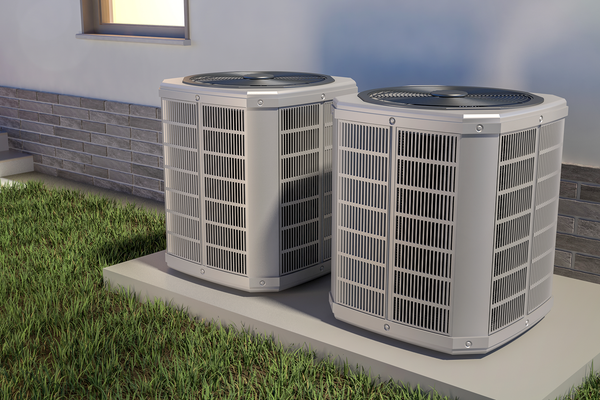A cluster of new studies from states, electric utilities and environmental groups suggest that as more electricity from solar and wind power is introduced on the nation’s electric grids, a wider use of electric heat pumps will help the United States reduce its greenhouse gas emissions to near zero by 2050.
The latest study, by a California research firm for three of the state’s major utilities, describes heat pumps for home heating and cooling as “the low hanging fruit when it comes to saving customers money and reducing greenhouse gas emissions."
It asserts that in California, where renewable power provides almost 50% of the state’s electricity, regulations and incentives for the “beneficial electrification” of new and existing homes using heat pumps could be the cheapest and fastest way to reach its climate goals.
On supporting science journalism
If you're enjoying this article, consider supporting our award-winning journalism by subscribing. By purchasing a subscription you are helping to ensure the future of impactful stories about the discoveries and ideas shaping our world today.
The study notes that California has begun weighing strategies on how to use cleaner electricity from heat pumps for “building decarbonization,” including changing building codes and providing incentives for more efficient heating and cooling. In California, the proposed changes would come largely at the expense of the natural gas industry, which provides most of the fuel that dominates heating and cooling of homes.
“This analysis has also generated a lot of interest and traction in the Northeast,” said Amber Mahone, who leads a team of analysts for San Francisco-based Energy and Environmental Economics Inc. They did the study for three utilities: Southern California Edison, the Sacramento Municipal Utility District and the Los Angeles Department of Water and Power.
She noted that heating and cooling of homes in New England are dominated by fuel oil dealers and the proximity of oil pipelines. Her study shows that there are economic and environmental benefits to using heat pumps in California, the Northeast and the Southeast, where many homeowners still rely on more expensive electric resistance heating.
New York, Vermont and Washington state are also studying policy changes that could encourage a wider use of heat pumps, which can provide both heating and cooling in a home, as well as water heating.
According to a report by the Department of Energy, heat pumps “offer an energy-efficient alternative to furnaces and air conditioners,” but in 2015, they were used in just 10% of American homes. In recent years, improvements in heat pump technology have also made them “a legitimate space heating alternative in colder regions,” such as Vermont, according to DOE.
Americans are not able to buy the most efficient heat pumps on the market; they are only available in Japan and Europe. The California study notes that the California Electric Commission is looking at scenarios that might require half of the homes in the state—over 7 million of them—to be refitted with heat pumps, starting in the early 2020s.
The report says that because the units provide both air conditioning and heating, they can “help protect public health in low-income and vulnerable communities as heat waves become more severe under climate change.”
To be sure, not everyone in the energy sector agrees with the idea of using government policies to rapidly expand the use of electric heat pumps. The Electric Power Research Institute, a nonprofit that does research for the electric power industry and the public, started a fight last year by saying that “next generation” improvements in heat pumps could enlarge their potential use to over 90% of the U.S. population.
Asked about that, Richard Murphy, managing director of energy marketing for the American Gas Association (AGA), said heat pumps are not competitive in colder parts of the United States. Natural gas also maintains an efficiency edge over electrically run cooling and heating systems, he said, adding that it costs more to transmit electricity over a long distance than to supply homes with natural gas.
The AGA, he noted, has commissioned its own study showing that the use of state policies to drive more electrification of homes would increase average residential household energy-related costs by between $750 and $910 per year, or about 38% to 46%.
Moreover, according to the AGA study, natural gas-powered heating and cooling are responsible for only 4% of U.S. greenhouse gas emissions. The power needed to accommodate the demands of more heat pumps, in the AGA’s view, could result in costs that are “significantly higher than the estimated cost of other greenhouse gas reduction options.”
Studies from two environmental groups, however, tended to agree with the California report’s conclusion that promoting heat pumps will provide a better and cheaper plan of action to deal with climate change.
The Rocky Mountain Institute reported last year that the price of heat pumps is expected to decline as the U.S. market for them grows and as “manufacturers realize economies of scale.” It also noted that eventual state or national carbon prices on fossil fuel emissions may also impose additional costs on natural gas companies.
Pierre Delforge, a senior scientist for the Natural Resources Defense Council, issued a statement that noted electric heat pumps still face hurdles in the market. Upfront costs for equipment and installation can be higher than those for natural gas-fueled counterparts, and many customers and even contractors in the United States “lack awareness” of the options that might benefit them, he said.
Reprinted from Climatewire with permission from E&E News. E&E provides daily coverage of essential energy and environmental news at www.eenews.net.
